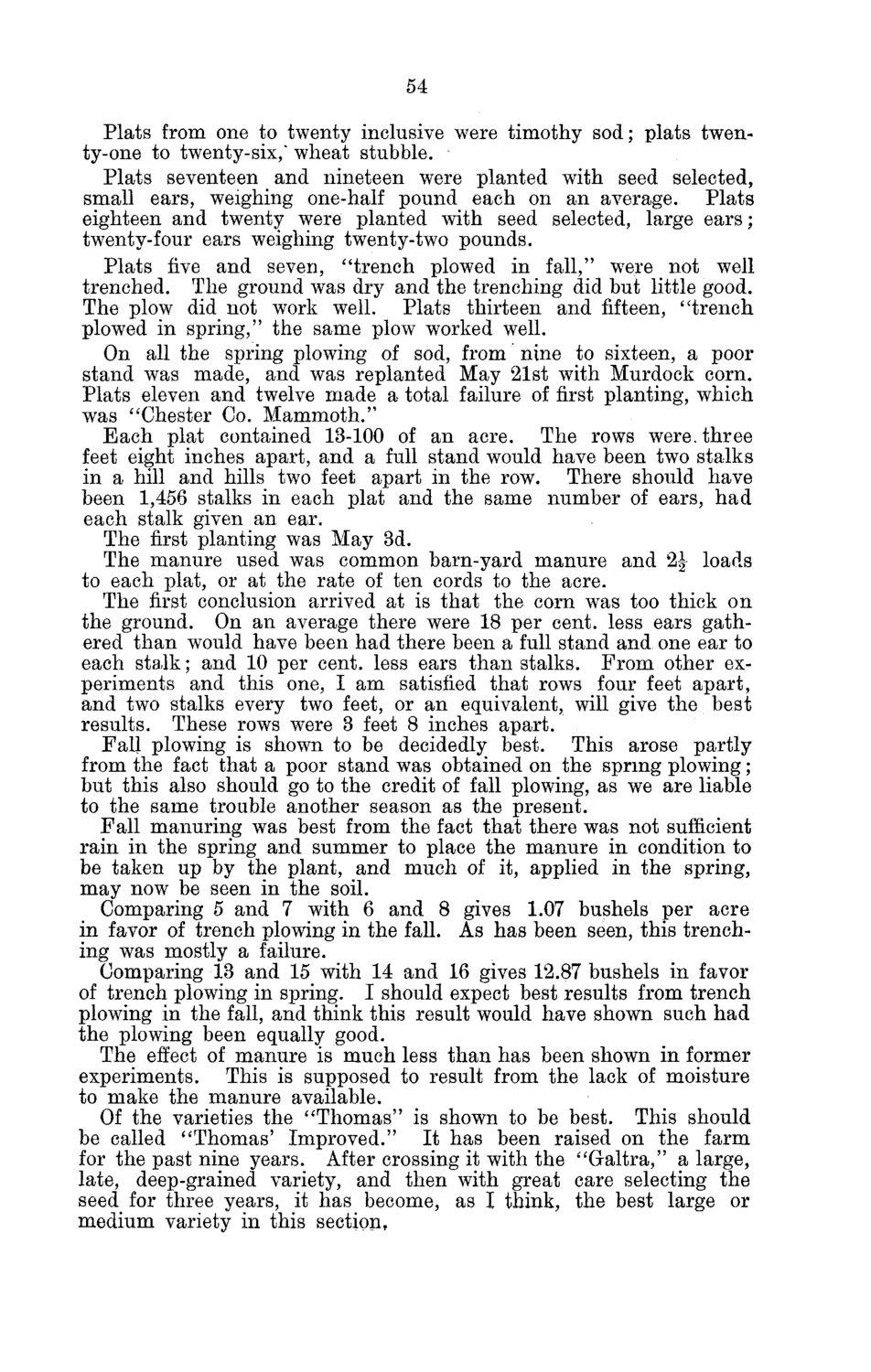| |
| |
Caption: Board of Trustees Minutes - 1880
This is a reduced-resolution page image for fast online browsing.

EXTRACTED TEXT FROM PAGE:
54 Plats from one to twenty inclusive were timothy sod; plats twenty-one to twenty-six,* wheat stubble. Plats seventeen and nineteen were planted with seed selected, small ears, weighing one-half pound each on an average. Plats eighteen and twenty were planted with seed selected, large ears; twenty-four ears weighing twenty-two pounds. Plats five and seven, "trench plowed in fall," wrere not well trenched. The ground was dry and the trenching did but little good. The plow did not work well. Plats thirteen and fifteen, "trench plowed in spring," the same plow worked well. On all the spring plowing of sod, from nine to sixteen, a poor stand was made, and was replanted May 21st with Murdock corn. Plats eleven and twelve made a total failure of first planting, which was "Chester Co. Mammoth." Each plat contained 13-100 of an acre. The rows were, three feet eight inches apart, and a full stand would have been two stalks in a hill and hills two feet apart in the row. There should have been 1,456 stalks in each plat and the same number of ears, had each stalk given an ear. The first planting was May 3d. The manure used was common barn-yard manure and 2J loads to each plat, or at the rate of ten cords to the acre. The first conclusion arrived at is that the corn was too thick on the ground. On an average there were 18 per cent, less ears gathered than would have been had there been a full stand and one ear to each stalk; and 10 per cent, less ears than stalks. From other experiments and this one, I am satisfied that rows four feet apart, and two stalks every two feet, or an equivalent, will give the best results. These rows were 3 feet 8 inches apart. Fall plowing is shown to be decidedly best. This arose partly from the fact that a poor stand was obtained on the spring plowing; but this also should go to the credit of fall plowing, as we are liable to the same trouble another season as the present. Fall manuring was best from the fact that there was not sufficient rain in the spring and summer to place the manure in condition to be taken up by the plant, and much of it, applied in the spring, may now be seen in the soil. Comparing 5 and 7 with 6 and 8 gives 1.07 bushels per acre in favor of trench plowing in the fall. As has been seen, this trenching was mostly a failure. Comparing 13 and 15 with 14 and 16 gives 12.87 bushels in favor of trench plowing in spring. I should expect best results from trench plowing in the fall, and think this result would have shown such had the plowing been equally good. The effect of manure is much less than has been shown in former experiments. This is supposed to result from the lack of moisture to make the manure available. Of the varieties the "Thomas" is shown to be best. This should be called "Thomas' Improved." It has been raised on the farm for the past nine years. After crossing it with the "Galtra," a large, late, deep-grained variety, and then with great care selecting the seed for three years, it has become, as I think, the best large or medium variety in this section,
| |